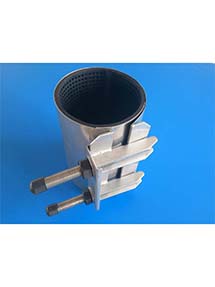rain channel drain
Rain Channel Drain An Essential Element for Effective Water Management
In today's world, where urbanization and climate change significantly influence our environment, effective water management systems are becoming increasingly vital. Among the various components utilized in drainage systems, rain channel drains have emerged as essential tools for managing stormwater and reducing the adverse effects of heavy rainfall. This article explores the importance of rain channel drains, their design features, installation processes, and their role in sustainable water management.
Understanding Rain Channel Drains
Rain channel drains, often referred to as trench drains, are linear drainage systems designed to collect and redirect rainwater runoff from surfaces such as roads, driveways, parking lots, and even rooftops. Unlike traditional drainage solutions that rely on specific points to collect water, rain channel drains operate along a continuous line, capturing water efficiently over a wider area. This design makes them especially effective in urban environments where impervious surfaces can lead to significant water accumulation.
Importance in Urban Drainage
One of the primary challenges in urban planning is managing stormwater runoff. As cities expand and more surfaces become impermeable, the volume of water that flows over them increases, leading to potential flooding, erosion, and water pollution. Rain channel drains mitigate these issues by quickly transporting runoff to appropriate drainage systems or retention areas. By doing so, they help prevent localized flooding and reduce the burden on municipal drainage systems, which can be overwhelmed during heavy rainfall.
Design Features
Rain channel drains are versatile and can be tailored to fit specific drainage needs. Key design features include
1. Materials They are typically constructed from durable materials such as concrete, polymer, or fiberglass. The choice of material often depends on the application, with heavy-duty options available for high-traffic areas.
2. Grating Options The top of the channel usually includes grates that allow water to enter while keeping debris and larger objects out. These grates can come in various shapes, sizes, and materials, offering aesthetic and functional choices.
3. Slope and Configuration Rain channel drains are designed with a slight slope to ensure efficient water flow. Their configuration can be adjusted to accommodate different site conditions and drainage requirements.
rain channel drain

Installation Process
The installation of rain channel drains involves several critical steps
1. Site Assessment A thorough evaluation of the area is necessary to determine the best placement and design for the drains.
2. Excavation Once the design is finalized, excavation of the site begins, ensuring the trench is deep enough to accommodate the drain while maintaining the required slope.
3. Base Preparation A stable base is essential for the drain's longevity. This often involves laying gravel or concrete at the bottom of the trench.
4. Drain Placement The rain channel drain is then placed in the trench, ensuring it is level and aligned correctly.
5. Backfilling and Compaction After the drain is in place, the trench is backfilled, and the soil is compacted to secure the drain and maintain surface integrity.
Sustainability and Environmental Impact
Beyond their functional benefits, rain channel drains contribute to sustainable water management practices. By efficiently managing stormwater runoff, they help improve water quality, reduce the risk of flooding, and promote groundwater recharge. Additionally, when integrated with green infrastructure, such as permeable pavements and bioswales, they can enhance urban green spaces and promote biodiversity.
In conclusion, rain channel drains are crucial in contemporary water management strategies. Their ability to efficiently manage stormwater runoff in urban areas not only mitigates flooding risks but also promotes environmentally sustainable practices. As climate change leads to more unpredictable weather patterns, investing in effective drainage solutions like rain channel drains will be essential for the resilience of our urban infrastructures.
-
The Smarter Choice for Pedestrian AreasNewsJun.30,2025
-
The Gold Standard in Round Drain CoversNewsJun.30,2025
-
The Gold Standard in Manhole Cover SystemsNewsJun.30,2025
-
Superior Drainage Solutions with Premium Gully GratesNewsJun.30,2025
-
Superior Drainage Solutions for Global InfrastructureNewsJun.30,2025
-
Square Manhole Solutions for Modern InfrastructureNewsJun.30,2025
-
Premium Manhole Covers for Modern InfrastructureNewsJun.30,2025
